Composer Charles Dodge
A Conversation with Bruce Duffie
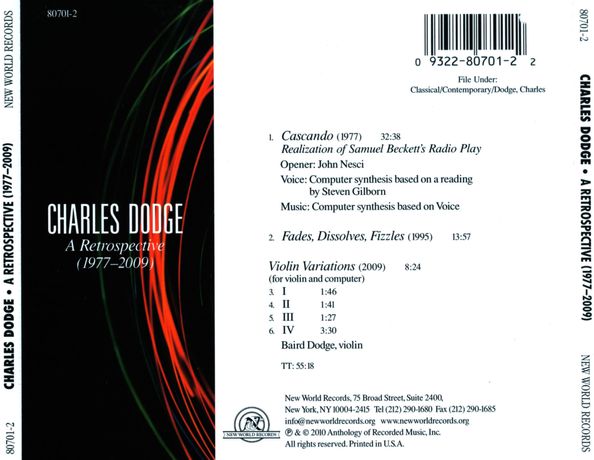
Charles Dodge was born in Ames Iowa on June 5, 1942. He studied
at the University of Iowa, Columbia, and Princeton. Among his teachers
were Richard Hervig,
Gunther Schuller,
Jack Beeson,
Chou Wen-chung,
and Otto Luening. He
worked on electronic music with Vladimir Ussachevsky,
and computer music with Godfrey Winham (husband of soprano Bethany Beardslee).
Dodge did some research at IBM Thomas J. Watson Research Center, Bell
Telephone Labs, and the University of California at San Diego.
Besides his compositions, he has taught at Columbia, Princeton, and
Brooklyn College.
== Names which are links in this box and below
refer to my interviews elsewhere on my website. BD
|
In December of 1991, I was in New York City to receive the ASCAP/Deems Taylor Award
for my series of broadcasts on WNIB, Classical 97 in Chicago. The programs
featured music and interview with, as I always said, “Mostly
living, mostly American composers.” The award
was presented to me by Morton Gould, who was
at that time President of ASCAP.
Needless to say, while I was in The Big Apple, I took the opportunity
to interview a few musicians who did not come to The Windy City very often,
or at all. One of those conversations is presented on this webpage.
Charles Dodge was among those at the ASCAP reception, and I asked him
if he would be willing to chat with me later that day. He graciously
accepted, and gave me explicit instruction to tell the cabbie when coming
to his apartment for the late-evening appointment.
It turned out that Dodge was having a fiftieth birthday seven months
later, so doing a special program was easily arranged. Now, thirty
years later, it pleases me to be able to present his thoughts in this transcribed
format . . . . .
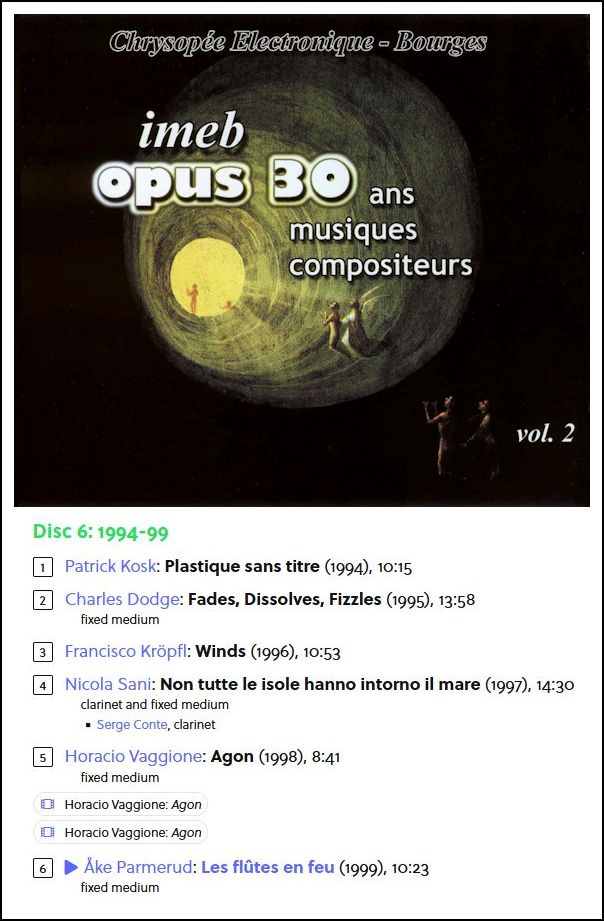
Bruce Duffie: You’re both a composer and
a teacher. How do you divide your time between those two very strenuous
tasks?
Charles Dodge: The teaching schedule effectively
divides it. I work at Brooklyn College usually Monday, Tuesday,
and Wednesday, and then I compose at home the rest of the week. I
also do preparation for teaching during that time, so it’s rather nicely
segmented.
BD: Do you keep them completely separate, or
do they ‘bleed’ a little bit, one into the other?
Dodge: It depends on what I’m teaching. These
days I teach mostly composition and computer music. So, when I go
computer music, I use examples from my work and others. In composition,
I tend not to do so much from my work.
BD: Are you ever stimulated in your composition
by what you see coming from the pencils of your students?
Dodge: Oh sure, absolutely. Not only what
the students are doing, but what the students are interested in.
That often gets me interested in things.
BD: What are they interested in these days?
Dodge: For one thing, someone is interested in
tuning, which is a topic that’s never caught my fancy until recently.
BD: Equal Temperament and Just Intonation?
Dodge: Yes, that’s right. This person was
interested in Just Intonation, but it’s always struck me that the issue
of tuning is related to the issue of tone color. Since its frequency
is also bound up with rhythm, I started looking around. I found one
article by Wendy Carlos which interrelates tuning and timbre in a very
interesting way that I wasn’t fully aware of. But I’ve been reading
things from the ’60s and ’70s
mainly by acousticians, and there is a line of people that were interested
in relating tuning and tone quality there.
BD: Are you going to begin using some of this
in your work?
Dodge: I suppose, yes.
BD: With computers, are you able to shift from
one tuning to another at the flick of a switch?
Dodge: Yes, or even a twist of the dial. You
can move continuously from one to the other. It’s really interesting.
The interplay of acoustics and musical ideas is a rich one for feeding my
imagination. The other day I was at home, and I was trying an experiment
of synthesizing ten independent sine tones, just bare interesting frequencies,
which began separated by certain intervals. In the course of ten
or twenty seconds, each freely glides in a line to another set of frequencies.
But in the course of that glide, the ten frequencies come into harmonic
relationship with each other for a moment, so there’s this fantastic feeling
of disorientation as these ten tones start to move out. Then, just
for a moment, they all come into line on a pitch, and they lose their independence.
They all contribute to a single effect, and then move out to just
another cloudy event of ten separate tones.
BD: All ten come to one pitch?
Dodge: No, all ten are separated and move out
to ten other separate pitches. But they start with a compression of
less than an octave, and they end with an expansion greater than that.
It becomes a harmonic series, and it’s just wonderful to hear what that
does to the human ear.
BD: Is this at all like a cosmic vision where
you have ten individual heavenly bodies that move about in the Heavens?
Dodge: I suppose something like that.
BD: If you look at them at a certain time, then
they relate?
Dodge: That’s right. They come into alignment.
It’s really interesting, and that’s the kind of thing that sometimes
will trigger the imagination to make a piece. Years ago I did a piece
for trumpet and tape called Extensions, where all the tape part
does is glissando into a single tone, and then back out. When it
gets towards that single tone, all of these myriads of tones start beating
with each other, and interfering. It’s really quite a wonderful effect.
BD: Now the group of ten tones we are talking
about, is that an idea, or is that the germ of an idea?
Dodge: That’s the germ of an idea. I hope
it’s an idea. [Bursts out laughing] I hope there’s a piece
in it someplace, but I’m not sure. That was just a test. I imagine
the way it would be used compositionally would be if there were lots of these
shifting islands of tones, not just one of them. There’d be a polyphony
happening on different scales, both in time and in frequency.
BD: Is this something that’ll be purely like the
Caruso piece, or will you put live people with it?
Dodge: I have a commission to do an instrumental
piece, a work for instrument and tape, so I’m looking for ideas that can
portray one way with the computer, and a complimentary way with the instruments.
If you had an instrument holding that tone that they all coalesce on,
and then these seemingly unrelated sine tones glissando, for a moment
they all share the same harmonic series before the tone has moved on.
That could be really nice. It would involve these forces just passing
through each other.
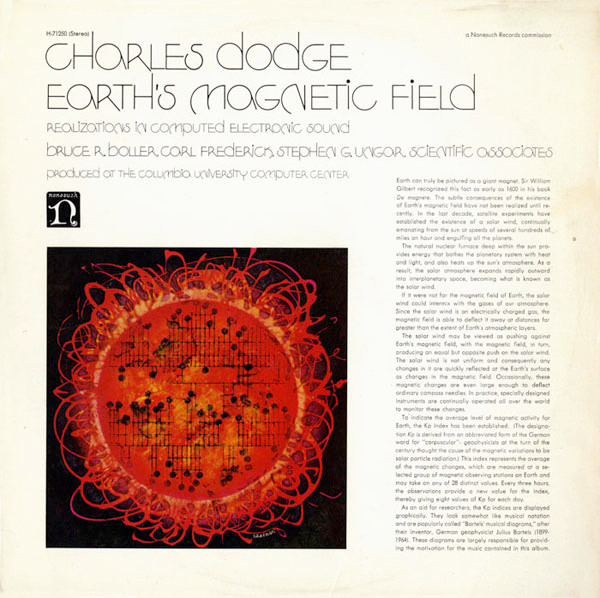
BD: Man in the cosmos! [Both laugh]
Dodge: Yes, something like that.
BD: You’ve been working on this for
a long time. How do you see the interrelationship between humanity
and electronics?
Dodge: I’ve always used computers, even since
the mid-60s, and the neat thing about a computer is that it’s just a
great big not even intelligent programmable calculating machine. The
computer is so flexible, and it can do so many different things.
It’s a continual source of astonishment to me. One of the things
I’ve been working on is a radio piece called Hoy (In His Memory)
in collaboration with the writer Dale Worsley. It’s set in Appalachia,
so there’s some banjo music that I made for that. We just sampled
the banjo. By that I mean we recorded a banjo player playing one
note at a time, and got a whole big collection of banjo tones. Then
I programmed the computer simply to assemble those tones into music that
sounds like somebody could have played it on the banjo. You really
don’t know whether that’s a normal person playing, or if it’s a somewhat
eccentric person playing, or even something else. The music doesn’t
have to sound electronic in order to engage the computer. It can be
acoustical in origin and still use the computer as a mixing device for imparting
musical logic to things.
BD: I assume that it’s more than what a person
could do at once, even if that person could do all of these extra things
individually?
Dodge: Yes, right. When somebody who plays
that kind of plucked instrument hears that passage, they immediately picture
moving their left hand up and down the fingerboard very fast. They
shake their heads, and say there’s no way that could be played. [Both
laugh]
BD: But if a person could play it accurately
that fast, would you rather have the live person play it, or do you still
want the electronics?
Dodge: It’s not electronic, it’s just the recorded
banjo. It’s like Conlon Nancarrow and
his player pianos. In some ideal world he might rather have people
playing them, but it’s just not going to happen.
BD: He said the reason he got into the piano
rolls was because they could be accurate.
Dodge: Yes, and well they are. That’s not
my reason, but it’s related. My reason is that I can embed ideas
into the computer program that assembles these files, and it sounds like
somebody playing the banjo. There is a musical logic that I want
the piece to have.
BD: [With a gentle nudge] You mean music
has to be logical???
Dodge: [Smiles] Yes, most music that I
know and love has something about it that’s logical. It’s hard
to imagine music that really doesn’t have some kind of logic. My
friend, John Cage’s music
has tremendous logic in the composition, even though it’s hard to demonstrate
or even understand.
BD: Even though you scatter notes and read them
any way you choose?
Dodge: That’s hard, sure. It’s hard to
deduce that from a sound, but there is a compositional logic that’s really
formidable.
BD: Is the logic of you, or is the logic of the
music, or is the logic of the cosmos?
Dodge: Yes, exactly! [Laughs]
BD: [Pursuing the point] Which is it, or
is it all three?
Dodge: It’s hard to know, isn’t it? It’s
largely a matter of how you view it, because you can say the music is
me, or you can say that I composed this music that seems to have a life
of its own, or that the cosmic aspect to it is more where you’ve attempted
to do something in the music that would portray some other matter, perhaps
some large forces in the universe. I’ve done that too! [Laughs]
I had a piece called Earth’s Magnetic Field , from the early
’70s, that was nothing more or less than the playing
of an index of the radiation from the sun on the magnetic field that surrounds
the earth. It’s really quite involving. I didn’t compose the
melodies that it plays at all. Those were simply the result of recordings
of the deformations in the magnetic field that result from the solar wind.
They really sound nice. There the cosmos does play music in
a way that we humans can relate to.
* * *
* *
BD: You’ve had performances of your music throughout
your creative life. Have you basically been pleased with those performances?
Dodge: I was thinking today that there are some
pieces of mine which were never played quite to my satisfaction, and
there are others that have wildly exceeded my expectations. So,
I suppose that averages it all out. Sometimes one has a wonderful
astounding experience. I can remember going to a concert in New
York where a piece of mine was played by Thomas Stevens, who’s the principal
trumpeter of the Los Angeles Orchestra. He had memorized the piece,
and then choreographed it with lighting. It was all very interesting
in a completely surprising way. I don’t think anyone had ever memorized
a piece of mine. I hadn’t even memorized a piece! He made
it into a riveting experience.
BD: Did that make it into a theater piece?
Dodge: Yes. The piece starts with the trumpet,
and then the tape, and they alternate for a while. Eventually they
coalesce and the tape drops out. The piece ends with the trumpet.
He started by playing the first unaccompanied trumpet part off on one
side of the dark stage, and when the tape played there was no one on stage.
He then went around to the other side of the stage when the tape was
playing, so his next entrance was from stage right. Then he was present
for the interaction between the trumpet and the tape, and he ended up in
the center of the stage for the part at the end where he played alone.
BD: Should you put a note in the score saying
that this kind of thing has been done, and that you encourage future performers
to do this?
Dodge: [Laughs] Yes, one could, but no,
I haven’t done that.
BD: How much leeway do you expect on the part
of the performer to go beyond merely playing your notes?
Dodge: I don’t have very strong feelings about
that. I know that a few of my pieces have been played very theatrically
and dramatically. That trumpet piece is one. There’s another
piece for tape and piano, Any Resemblance is Purely Coincidental,
where the tape parts feature the synthesized voice of Enrico Caruso. He
sings wonderfully (!), so the live person on stage
— whom you might think of as the soloist
— is actually an
accompanist for a soloist who’s not there. It’s a little like Godot.
[Laughs] As I recall,
when it was played at the Stockholm Festival, they hired a pianist who was
known as an accompanist.
Waiting for Godot (
GOD-oh) is a play by Samuel Beckett in
which two characters, Vladimir (Didi) and Estragon (Gogo), engage in a
variety of discussions and encounters while awaiting the titular Godot,
who never arrives. Waiting for Godot is Beckett's translation of
his own original French-language play, En attendant Godot,
and is subtitled (in English only) "a tragicomedy in two acts". The original
French text was composed between 9 October 1948 and 29 January 1949. The
premiere, directed by Roger Blin, was on 5 January 1953 at the Théâtre
de Babylone, Paris. The English-language
version premiered in London in 1955.
In a poll conducted by the British Royal National Theatre in 1998/99,
it was voted the "most significant English language play of the 20th century".
* * *
* *
|
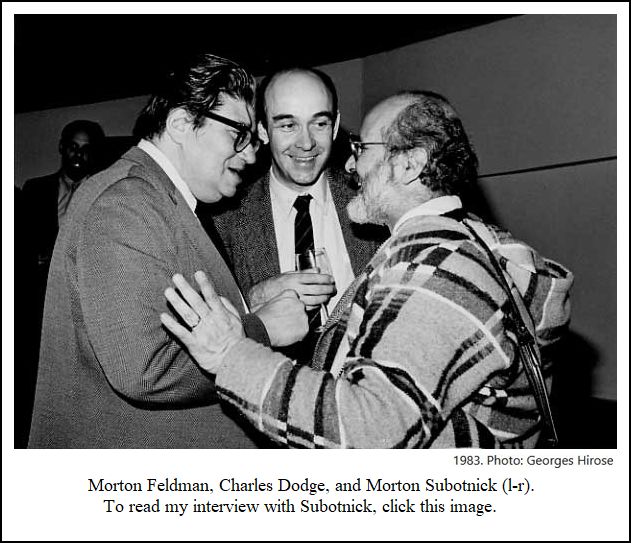
BD: A Gerald Moore type?
Dodge: Yes, a Gerald Moore type. She was
all dressed for a formal occasion, and yet the soloist wasn’t present
in person. So, that was an in-joke to the people in Sweden.
Another time I saw it done, they actually sneaked in a life-size picture
of Caruso as Canio in Pagliacci. [That is the costume Caruso
wears in the CD cover shown in the box below.] It was in the crook
of the piano, and appeared just as the piece began. What the piece
does is conjure up his presence in a ghostly way, and having his picture
there was a visual way of making it more concrete.
BD: Was it helpful for the audience?
Dodge: Yes, maybe so.
BD: In general, what do you expect of the audience
that comes to hear a piece of yours?
Dodge: I’ve been interested in that question for
a long time. In the ’60s, I got fairly disinterested
in new music concerts, especially in New York... although New York is
one of the few places where there may be audiences for these things.
It nonetheless seemed rather parochial, and my music wasn’t intended for
specialists, and has never been. It really is for people to listen
to.
BD: It’s for a general
audience?
Dodge: Yes, I’d say so. I got very interested
in using the computer because then I could make tapes, and people could
hear the tapes at home, or on phonograph records, or over radio on stations
such as yours. It was a way of taking music to individuals that I
like very much, and I still believe in that, and practice that. The
channels of distribution are a little clogged at the moment, so concerts
have taken on a relevance that they may not have had before. They’re
an efficient way of hearing new pieces, even if the audiences are small
and very narrow.
BD: I asked you about performances. Have
you also been pleased with the recordings, because they have a bigger
universality?
Dodge: Sure. I can’t think of a recording
of mine that I don’t like. They’ve been done very, very well.
I’m about to do a compact disc for New Albion [shown in the box below],
and that has a spectacular performance of a piece of mine for viola and
tape, called Viola Elegy, written in memory of Morton Feldman [seen
in the photo above-left]. My twenty-two-year-old son, who is
a violinist and plays the viola occasionally, picked that piece up.
I asked him to play it on a couple of concerts, and he did, and for the
recording session he relearned the piece, and he just played it spectacularly
in a way far and beyond any way that he’d played it before. [Baird
Dodge joined the Chicago Symphony Orchestra as a violist in 1996, moved
to the second violin section later that same year, and was appointed Principal
Second Violin by Daniel
Barenboim in 2002.] Also
on that same CD is a recording of a piece of mine called The Waves,
which I wrote for Joan
La Barbara (the wife of Morton Subotnick, who is also in the photo),
and again, that recording is one on which she out-did herself. Next
week, pianist Alan Feinberg
is going to record Any Resemblance is Purely Coincidental, and
I have high expectations for his performance as well. There’ll also
be another work, which is just a tape piece, called Speech Songs,
on the text of Mark Strand.
If I may, this brings up another musical coincidence. When having
conversations with composers, the name of Enrico Caruso rarely (if ever)
comes up. Among my 1600+ interviews, there were also many with opera
singers and conductors, but even there, the Neopolitan tenor rarely was
discussed. However, on this particular trip to New York City, he
featured prominently on two occasions. As mentioned above, Dodge’s
work Any Resemblance is Purely Coincidental uses Caruso recordings,
but the true coincidence on my trip was when I chatted earlier in the
day with Meyer Kupferman. He had also invited me to his home, and
it turns out that his apartment was one in which the great tenor had resided!
* * *
* *
Mark Strand (April 11, 1934 – November 29, 2014)
was a Canadian-born American poet, essayist and translator. He was appointed
Poet Laureate Consultant in Poetry to the Library of Congress in 1990, and
received the Wallace Stevens Award in 2004.
|
BD: What advice do you have for young composers
coming along?
Dodge: [Thinks a moment] The advice that I
always give is that one should be a musician if that’s the only thing one
can imagine doing. But it’s a very difficult time right now to be
a creative artist in the world. There’s not a lot of support, but at
least for musicians, the university has provided a teaching possibility for
those who are interested, and also are very experienced in talking about music,
and that provides a living. In recent times, there’s been the possibility
for some composers who are able to generate a great deal of interest in
their music, to get grants, especially those who write for large forces.
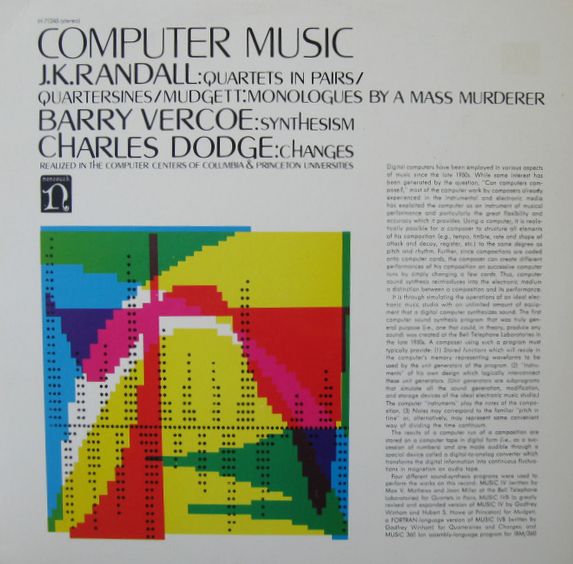 BD: That’s encouraging.
BD: That’s encouraging.
Dodge: Yes, absolutely, though it seemingly isn’t
quite as smooth today as it was ten years ago. The universities
have pretty much fallen apart, and have abdicated their responsibility
to education. That’s a pretty broad statement, but there are many
fewer positions open in universities today than there were, and there are
many fewer possibilities for commissions and performances than there were.
BD: Despite that, are you optimistic about the
future of music?
Dodge: Yes, but the future of music is certainly
bound up for the future of rational man. I really don’t know what’s
going on right now. Maybe it’s personally a disoriented time. It’s
been a hard time for me. My father died recently, and my mother’s been
quite ill, and so I’ve turned a bit inward. Then, what’s going on
in the world at large is, at least on the surface, quite encouraging with
what’s going on in Eastern Europe. But below the surface it may
be troubling, and it’s hard to know how that whole thing is going to play
out. Remember, the former Soviet Socialist Republics now are independent
countries with nuclear weapons, and that is something to be very, very
frightened of, and is very worrying.
BD: Is all of this reflected in the sounds that
come from your pen and your computer?
Dodge: I suppose... in my confusion, and not quite
knowing how this filters down into an individual who’s really trying
to get through life with honor and with contact with people; with interaction
with people; with celebrating the richness of contacts at an individual
level, and then seeing the seeming failure at institutional levels...
it’s all very disturbing, and I’m sure that my music portrays a kind of
confusedness. I hope that the confusion it portrays is a philosophical
one; that the confusion doesn’t play itself out simply as something that’s
incomprehensible to the listener, but rather is the musing of an individual
who is living in interesting times. [Both laugh]
BD: One last question. Is composing fun?
Dodge: Oh, yes! I’ve had some of the most wonderful
times in my life composing, especially discovering things with the computer.
That has been just hilarious fun, tremendously interesting, and something
I have experienced in few other ways. Composing is fun, but I don’t
take a lot of pleasure in merchandising new music. That’s mainly
because I’m not very good at it. There are many different facets
to a composer’s career. Making the music is, of course, central,
and that’s the part you have to emphasize. But that’s only a part
of it. You have to get the music to people who want to play.
You have to get the music to people who want to make it available to others,
and it’s fortuitous that you and I met this afternoon. That provided
a great opportunity for me to share my ideas with you, and to share the
music with your listeners. It’s wonderful, but these opportunities
don’t often just come along out of the blue.
BD: It worked out very, very well. Thank you
for letting me come to your apartment.
Dodge: You’re welcome.
© 1991 Bruce Duffie
This conversation was recorded in Dodge’s
apartment in New York City on December 9, 1991. Portions were broadcast
on WNIB the following year, and again
in 1997. This transcription
was made in 2022, and posted on this
website at that time. My thanks
to British soprano Una Barry for her
help in preparing this website presentation.
To see a full list (with links) of interviews which have been transcribed
and posted on this
website, click
here. To read my thoughts on editing these interviews
for print, as well as a few other interesting observations, click here.
* * * *
*
Award -
winning broadcaster
Bruce Duffie was with WNIB, Classical
97 in Chicago from 1975 until
its final moment as a classical station in
February of 2001. His interviews have also
appeared in various magazines and journals since
1980, and he now continues his broadcast series on WNUR-FM, as
well as on Contemporary
Classical Internet Radio.
You are invited
to visit his website
for more information about his work, including
selected transcripts of other interviews,
plus a full
list of his guests. He would also like to call
your attention to the photos and information about his grandfather,
who was a pioneer in the automotive field more than a century ago.
You may also send him E-Mail with comments,
questions and suggestions.
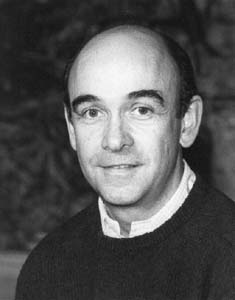




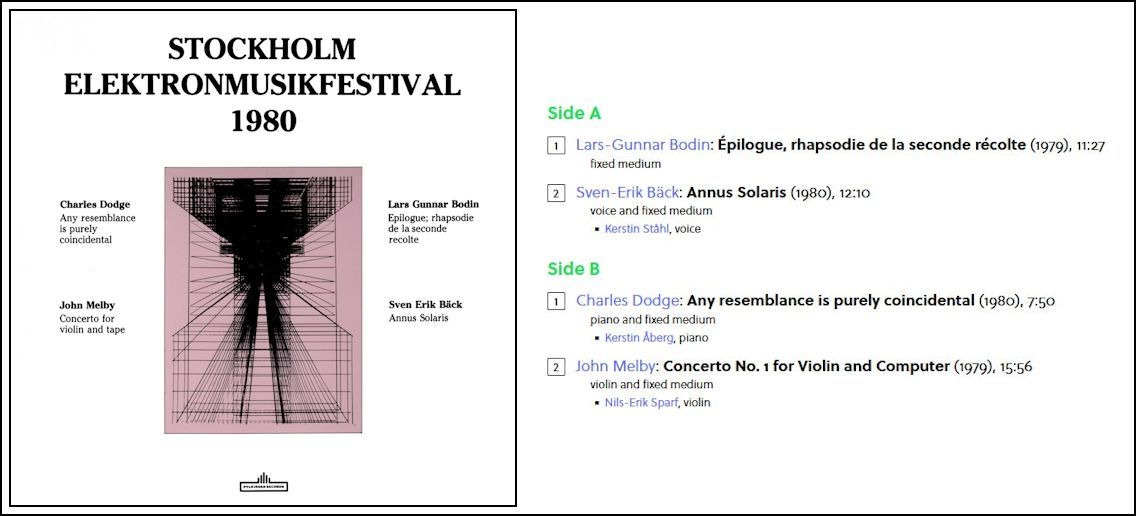

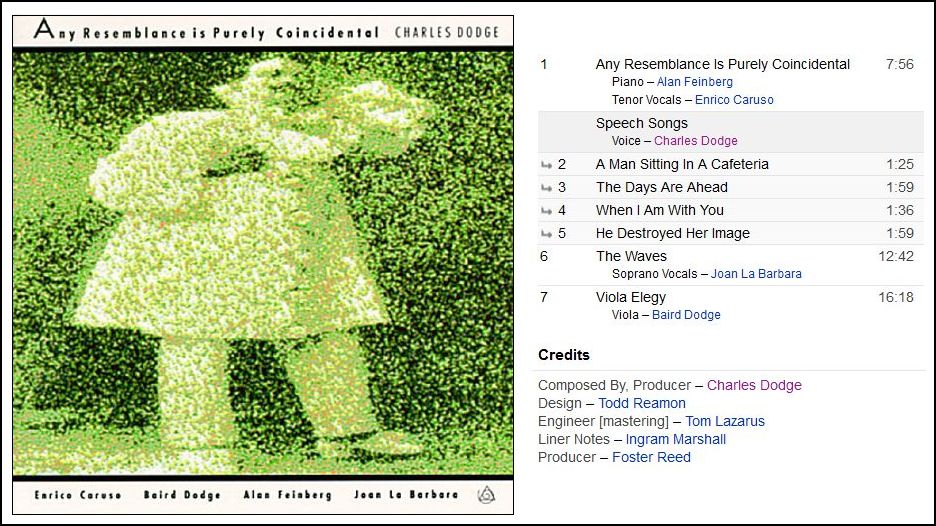
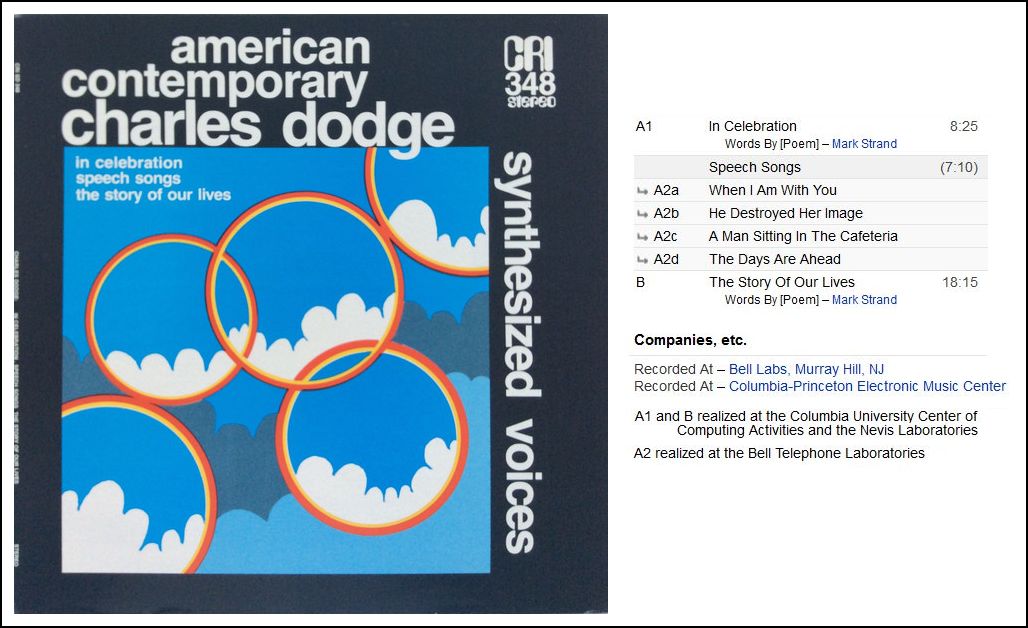
 BD: That’s encouraging.
BD: That’s encouraging.